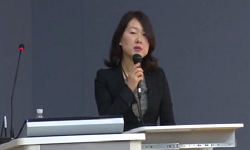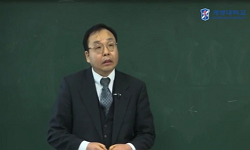中國 南京 方山에 위치한 洞玄觀은 남경에서 가장 오래된 도교 사원 유적이다. 남경대학 역사학원과 남경대학 문화와 자연유산 연구소는 이 유적에 대하여 2012년 7월부터 11월까지, 2013년 5월...
http://chineseinput.net/에서 pinyin(병음)방식으로 중국어를 변환할 수 있습니다.
변환된 중국어를 복사하여 사용하시면 됩니다.
- 中文 을 입력하시려면 zhongwen을 입력하시고 space를누르시면됩니다.
- 北京 을 입력하시려면 beijing을 입력하시고 space를 누르시면 됩니다.

南京 洞玄觀 유적 출토 南朝 연화문와당에 대한 고찰 = A Study on the Southern Dynasties' Roof-end Tiles Excavated from the Dongxuanguan Taoist temple site, in Nanjing
한글로보기https://www.riss.kr/link?id=A108985700
- 저자
- 발행기관
- 학술지명
- 권호사항
-
발행연도
2024
-
작성언어
-
- 주제어
-
KDC
900
-
등재정보
KCI등재
-
자료형태
학술저널
-
수록면
115-129(15쪽)
- 제공처
-
0
상세조회 -
0
다운로드
부가정보
국문 초록 (Abstract)
中國 南京 方山에 위치한 洞玄觀은 남경에서 가장 오래된 도교 사원 유적이다. 남경대학 역사학원과 남경대학 문화와 자연유산 연구소는 이 유적에 대하여 2012년 7월부터 11월까지, 2013년 5월부터 9월까지 두 차례에 걸쳐 발굴 조사를 진행하였다. 발굴 조사를 통해 南朝의 축대 유적(擋土石牆遺蹟), 唐代 건축물과 塼井 유적, 宋元 시기의 석벽 유적(石牆遺蹟), 明淸 시기의 건축물과 전정 유적 등이 발견되었다. 유물은 남조부터 명청 시기에 속하는 건축 부재가 주로 출토되었으며 잡상, 신상의 잔해, 수키와, 평기와, 와당 등과 함께 소량의 도자기가 출토되었다. 남경대학 문화와 자연유산 연구소의 안내에 따르면, 방산 동현관 유적에서 출토된 와당은 총 133점으로, 남조부터 명청 시기에 속하는 다양한 와당이 출토되어 시대적인 특징을 뚜렷하게 보여주고 있다.
본고에서는 방산 동현관 유적에서 출토된 남조 와당을 정리하여 기초적인 검토를 통해 六朝瓦當 연구와 함께 동시기 백제 와당과의 비교 연구를 위한 자료로 소개하고자 한다.
방산 동현관 유적에서 출토된 남조 와당은 총 16점으로 모두 연화문와당이다. 사잇잎의 장식 문양(연꽃잎사이 구획선 끝부분)을 기준으로 4형식으로 분류하고 그 특징을 검토하였다. 기존에 출토되어 시기가 분명하게 설정된 와당의 특징과 비교하여 방산 동현관 유적에서 출토된 남조 와당의 대략적인 시기를 설정하였다. 또한 실물 와당 자료 관찰을 통해 당면과 주연부의 제작 기법, 와당 뒷면의 성형기법, 와당과 수키와의 접합기법 등 와당의 제작 기법을 확인하였다. 특히 회전성형을 통한 조정 흔적과 함께 회전축으로 보이는 흔적이 관찰되어 주목할 만하다. 관찰한 와당 표본의 수량이 적어 정확한 인과관계를 파악하기는 어려우나 향후 와당의 생산 체계나 와공과 관련한 연구 자료에 도움이 될 것으로 기대한다.
다국어 초록 (Multilingual Abstract)
Located in the Fangshan, Nanjing, the Dongxuanguan is the oldest Taoist temple site in the city. Two excavation campaigns were carried out by the School of History at Nanjing University and the Nanjing University Institute of Cultural and Natural Heri...
Located in the Fangshan, Nanjing, the Dongxuanguan is the oldest Taoist temple site in the city. Two excavation campaigns were carried out by the School of History at Nanjing University and the Nanjing University Institute of Cultural and Natural Heritage, spanning from July to November 2012 and from May to September 2013. During these excavations, various significant findings emerged. These included remnants of a retaining stone wall dating back to the Southern Dynasties, remnants of buildings and a brick well from the Tang Dynasty, stone walls from the Song Yuan period, and buildings and a brick well from the Ming and Qing periods. Additionally, a plethora of architectural elements spanning from the Southern Dynasties to the Ming and Qing periods were unearthed, along with a small assortment of pottery, miscellaneous statues, remains of deity statues, convex roofing tiles, concave roofing tiles, and Roof-end Tiles. According to the Nanjing University Institute of Cultural and Natural Heritage, a total of 133 Roof-end Tiles were excavated from the Dongxuanguan Taoist temple site at Fangshan, each distinctly reflecting the characteristics of its respective era.
This paper summarizes the Roof-end Tiles from the Southern Dynasties excavated at the Dongxuanguan Taoist temple site in Nanjing. It presents them as research data for the Roof-end Tiles of the Six Dynasties period and for comparative studies with Baekje Roof-end Tiles from the same period through a fundamental review.
Sixteen Roof-end Tiles from the Southern Dynasties were excavated at the Dongxuanguan Taoist temple site in Fangshan, all featuring lotus flower patterns. These tiles were categorized into four types based on the decorative patterns between lotus leaves, and their distinguishing characteristics were examined. Comparisons were drawn with previously excavated Roof-end Tiles, which allowed for an approximate dating of the Southern Dynasties' Roof-end Tiles unearthed at the Dongxuanguan Taoist temple site in Fangshan. Furthermore, an analysis of the actual Roof-end Tiles data provided insights into production techniques such as front and periphery molding, back molding, and the bonding technique between Roof-end Tiles and convex roofing tiles. Notably, traces resembling rotational axes and indications of adjustments through rotational molding were observed. Although the small sample size limits definitive conclusions, these findings are anticipated to contribute to future research on the production and manufacturing systems of Roofend Tiles.
동일학술지(권/호) 다른 논문
-
- 공주대학교 백제문화연구소
- 홍보식 ( Hong Bo-sik )
- 2024
- KCI등재
-
한국 <곰나루>설화와 오키나와 <곰 아내(熊女房)> 설화의 비교연구
- 공주대학교 백제문화연구소
- 서은경 ( Seo Eunkyung )
- 2024
- KCI등재
-
- 공주대학교 백제문화연구소
- 라선정 ( Ra Sun Jung )
- 2024
- KCI등재
-
- 공주대학교 백제문화연구소
- 이현숙 ( Lee Hyun-sook )
- 2024
- KCI등재




 KISS
KISS




